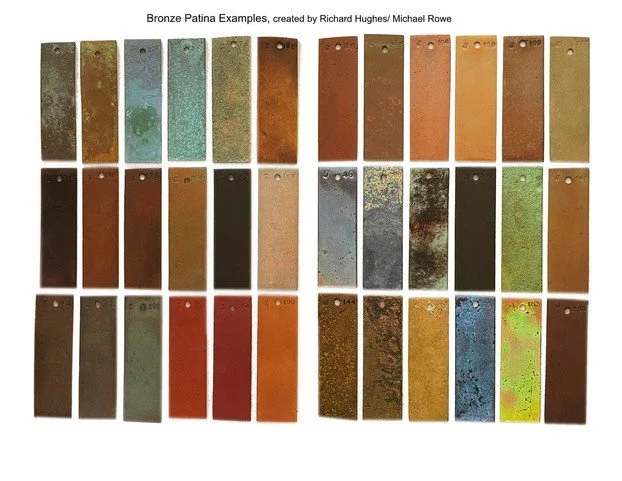Art of Patination
The patination of bronze (sculpture) is the intentional change in colour of the bronze metal surface, achieved by chemically oxidizing the copper within the Everadur bronze alloy… through the application of high heat in combination with concentrated acids. Depending on the degree of heat, which chemicals, and their degree of concentration, bronzes can be patinated in a wide variety of colours, and values ranging from browns and black, to greens, yellows, deep blues, and reds. Additionally, complexity in colour and texture can be achieved through layering. Application is by brush stippling, spraying, burying, and/or immersion. In addition, contemporary patineurs often blend small amounts of pigments to enhance and emphasize colour.
Examples of chemicals which offer a variety of colours:
Liver of Sulphur - golden brown to black
Ferric Nitrate - golds, browns, reds
Cupric Nitrate - greens & blues
Ammonium Sulfide - blues to blacks
Cupric Chloride - yellowish greens
Potassium Nitrate - dark reds
Cupric Sulfate - encrusted textured greens
Bronze Patina examples below, created by Richard Hughes and Michael Rowe
Adonis Bronze Foundry and Fine Art Casting shows how to patina a bronze sculpture. The process of how artisans apply colorization with chemicals and heat.
